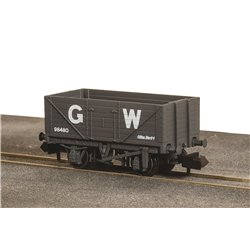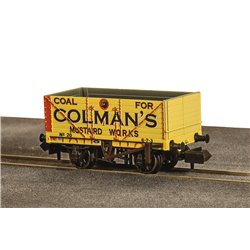Static grass puffer bottles work by manually charging model grass fibres with static electricity. When the charged...
No products
Product successfully added to your shopping cart
There are 0 items in your cart. There is 1 item in your cart.
Search Tips
What is the difference between ready-to-run and kit-built model rolling stock?
When it comes to acquiring rolling stock for your model railway layout, you have two main options: ready-to-run models or kit-built models. Both have their own advantages and disadvantages, catering to different levels of experience and preferences amongst modellers.
Ready-to-Run Models
As the name suggests, ready-to-run (RTR) models come pre-assembled straight out of the box. These are ideal for those who want to get their layout up and running quickly without the hassle of construction. RTR rolling stock is manufactured by model railway companies like Bachmann, Hornby and Dapol, offering a wide range of locomotive, coach and wagon models across various scales and eras.
The main benefit of RTR models is their convenience - you simply take them out of the packaging and they are ready to run on your layout. The high standards of modern RTR models mean they often feature impressive levels of detail and decoration right out of the box. For those new to the hobby or with limited time, RTR is an easy way to build up a fleet.
However, RTR models do come at a higher cost compared to kits. You are paying for the labour involved in assembly and finishing. There is also less scope for customisation or super-detailing unless you are willing to modify the model yourself.
Kit-Built Models
In contrast, kit-built models require assembly from the individual components provided. This appeals to many modellers who enjoy the hands-on aspect of construction as part of the hobby. Model kit manufacturers like Parkside, Langley, Dundas and Cambrian offer a vast array of obscure prototypes often not available RTR.
Working on a kit allows you to develop skills like painting, lining, weathering, and detailing to create a truly unique model tailored to your own specifications. The pride and satisfaction that comes from building a model from scratch is a major draw for many enthusiasts.
That said, kit construction requires more time, tools, workspace and modelling skills. Kits can be quite fiddly, especially for the inexperienced, and the final result is only as good as your own ability. Purchasing multiple kits can also become costlier than RTR models over time once you factor in materials like paints, transfers and adhesives.
In essence, RTR models are the pragmatic choice for those wanting working models with minimal effort, whereas kits cater to hobbyists who prioritise the craft of model-making itself. The right option simply depends on your personal preferences, budget, time constraints and skill level. Many modellers opt for a combination of both on their layouts.
Click here to receive the tips weekly in your mailbox. You can unsubscribe at any time.










